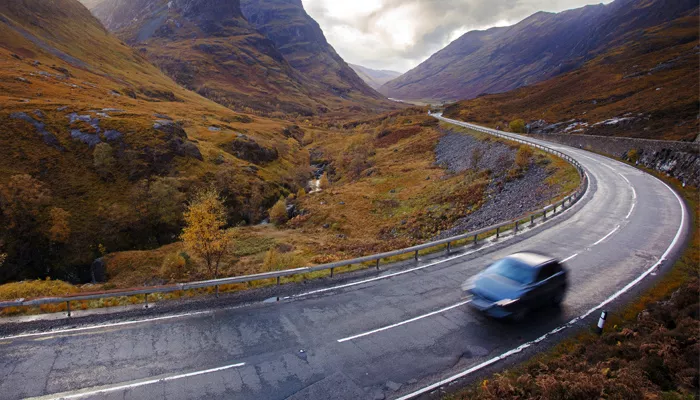How green is your classic car?
In an age of carbon calculators, zero-emissions targets and heated debates over petrol bans, classic cars might seem like the antithesis of environmental responsibility. After all, they run on fossil fuels, lack catalytic converters in many cases, and were built decades before anyone had heard of net zero.
So, is your classic a massive burden on the planet? Pretty much any human activity has an impact, but when you factor in how they’re driven, how they’re maintained, and the environmental cost of producing new vehicles, classic car ownership - when compared to other forms of transport and lifestyle choices - is not as environmentally ‘unfriendly’ as you might first imagine.
Usage, not age, is what counts
The most important factor in understanding a classic car’s environmental footprint is usage. While an average modern car in the UK covers 7,400 miles a year, the typical classic clocks up just 1,200 miles. That means even though older engines are less efficient - sometimes producing double the CO₂ per mile compared to modern equivalents - the dramatically lower annual mileage keeps total annual emissions low.
Put simply: your neighbour’s diesel SUV, driven daily for the school run and supermarket trips, likely emits far more CO₂ each year than your cherished MGB or E-Type Jaguar.
Fuel efficiency, unsurprisingly, has improved over time: the average passenger car today is roughly twice as efficient as it was in 1956. But again, because modern vehicles are driven far more, the real-world CO₂ difference isn’t as straightforward as miles-per-gallon figures suggest. Also, more ‘modern classics’ with better fuel efficiency are starting to bring the overall carbon footprint of all cars categorised as ‘classics’.
One of the most overlooked aspects of the ‘green’ conversation is embedded carbon - the environmental cost of manufacturing a car in the first place. Studies have shown that building a new vehicle can produce anywhere from 6 to 35 tonnes of CO₂ equivalent, depending on the size and drivetrain. Electric cars, with their energy-intensive battery production, are at the upper end of that range.
By contrast, a classic car’s manufacturing carbon footprint has already been ‘paid off’. Every year you keep it running is a year you avoid the environmental impact of building a replacement. This longevity, combined with the repairable, reusable nature of older vehicles, makes classic cars a shining example of sustainability in a throwaway culture. It’s recycling at its best.
Fuel and efficiency
It’s no secret, however, that a 1960s V12 Ferrari or a 1970s American muscle car drinks more fuel than a modern hatchback. Many classics return 15-25 mpg, compared to 50+mpg for today’s diesels or hybrids. But again, the limited annual mileage puts this into perspective.
There’s also scope for improvement. Subtle upgrades such as electronic ignition, modern carburettor tuning, and low-rolling-resistance tyres can improve efficiency without spoiling originality. Some owners go further, running their classics on biofuels or synthetic fuels, which are becoming increasingly viable as low-carbon alternatives. And simple measures - regular maintenance to keep engines efficient and avoiding unnecessary idling when driving - can all help to reduce emissions further.
A report from automotive PR and communications agency loop has put some long-awaited hard data behind the argument that classic car ownership is actually quite a ‘green’ pursuit. By analysing millions of datapoints from the DVLA and Department for Transport - and crunching numbers through bespoke software - loop has calculated the true annual carbon footprint of all classic cars registered in the UK.
The verdict? The average classic’s yearly emissions are roughly equivalent to drinking three lattes a day, enjoying a three-day Christmas on your own, or making a single round-trip flight from London to New York. And when you scale it up, the entire UK classic car fleet accounts for just 0.22% of total emissions from the UK transport sector. Domestic aviation, for example, accounts for around 1.2% of UK transport emissions, while heavy goods vehicles contribute over 16%.
Pollutants and air quality
Where classics can’t compete with modern cars is in their control of local pollutants such as nitrogen oxides (NOx) and unburnt hydrocarbons. Modern vehicles benefit from catalytic converters, particulate filters, and advanced engine management systems to keep emissions within strict legal limits.
However, in the broader picture, the small number of classics on the road - and the even smaller fraction being driven on any given day - means their overall contribution to air quality problems is minimal compared to the modern fleet. In many cities, classic cars make up less than 0.1% of daily traffic.
Driving style and maintenance
Classic cars often encourage a different pace. Owners tend to drive them more gently, both to preserve the mechanicals and because their handling, brakes, and crash protection aren’t designed for today’s traffic speeds. This ‘slow car fast’ mentality can reduce fuel use and emissions compared to aggressive driving in a modern performance car.
Meticulous maintenance is also a hallmark of the classic community. Keeping an engine well-tuned, tyres inflated correctly, and brakes properly adjusted can make a tangible difference to both emissions and safety. Many owners relish the hands-on involvement - a far cry from the sealed, disposable nature of modern cars.
If you judge purely on tailpipe emissions per mile, classics will never match modern vehicles. But if you step back and look at the full environmental picture - from annual mileage to embedded carbon - the case against them becomes far less clear.
Classic cars are rolling history, cherished and preserved by passionate owners. They are driven sparingly, maintained diligently, and enjoyed responsibly. In a world of disposable products, a 50-year-old car still doing exactly what it was designed to do might just be one of the greenest vehicles on the road.
Want to know more about our Classic Car Insurance offering through Footman James? Speak to your usual Towergate adviser to find out more.
Date: August 19, 2025
Category: Motor












